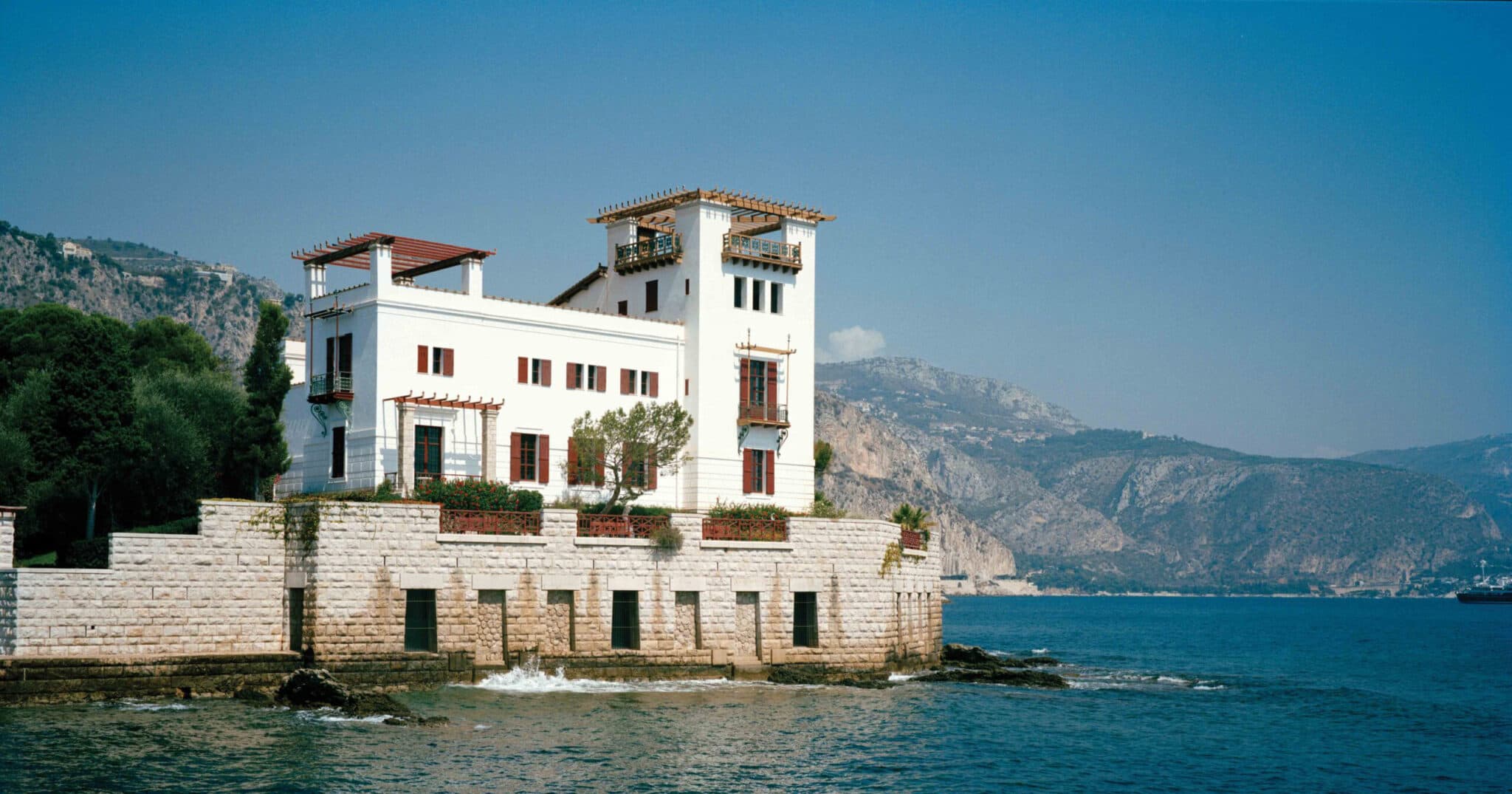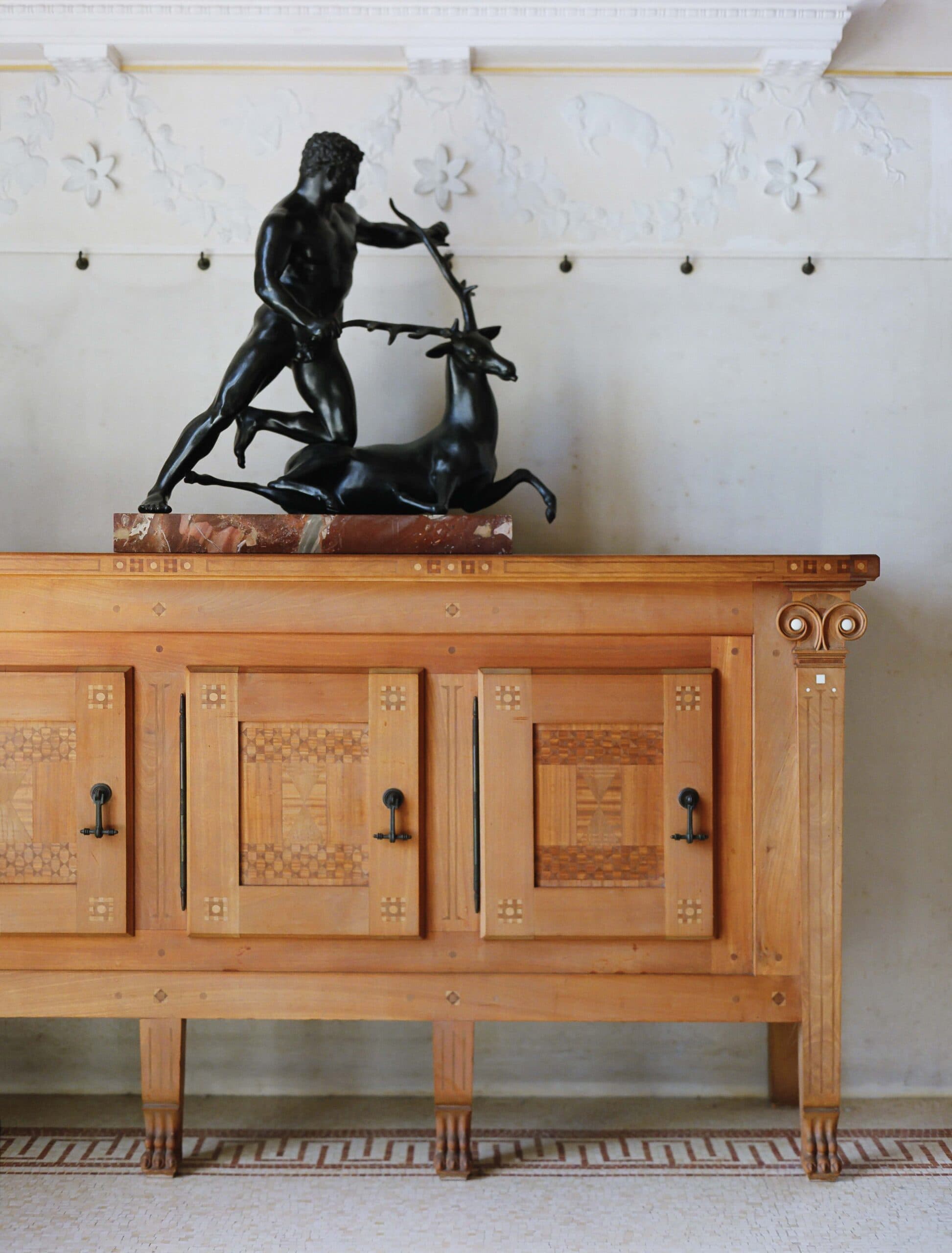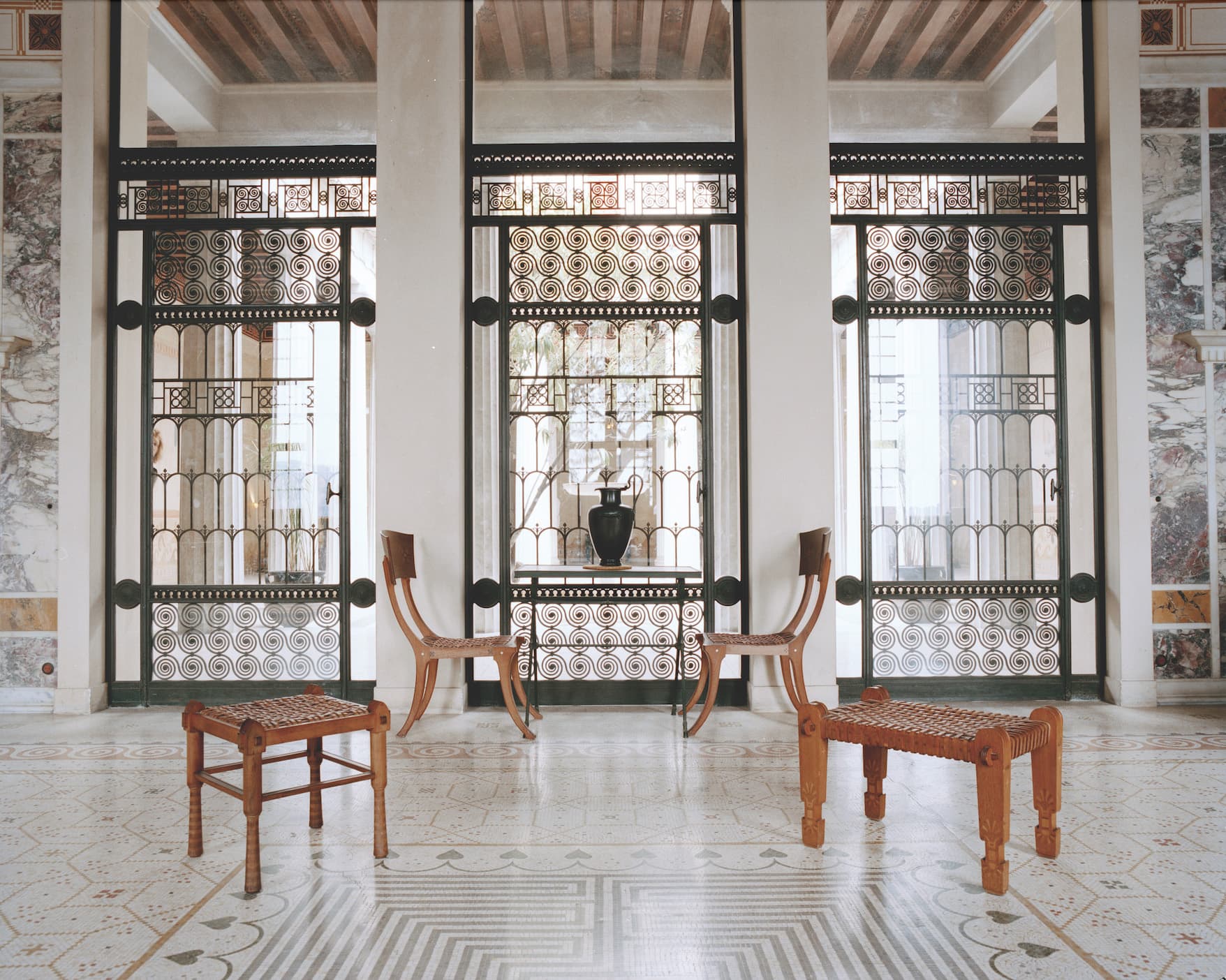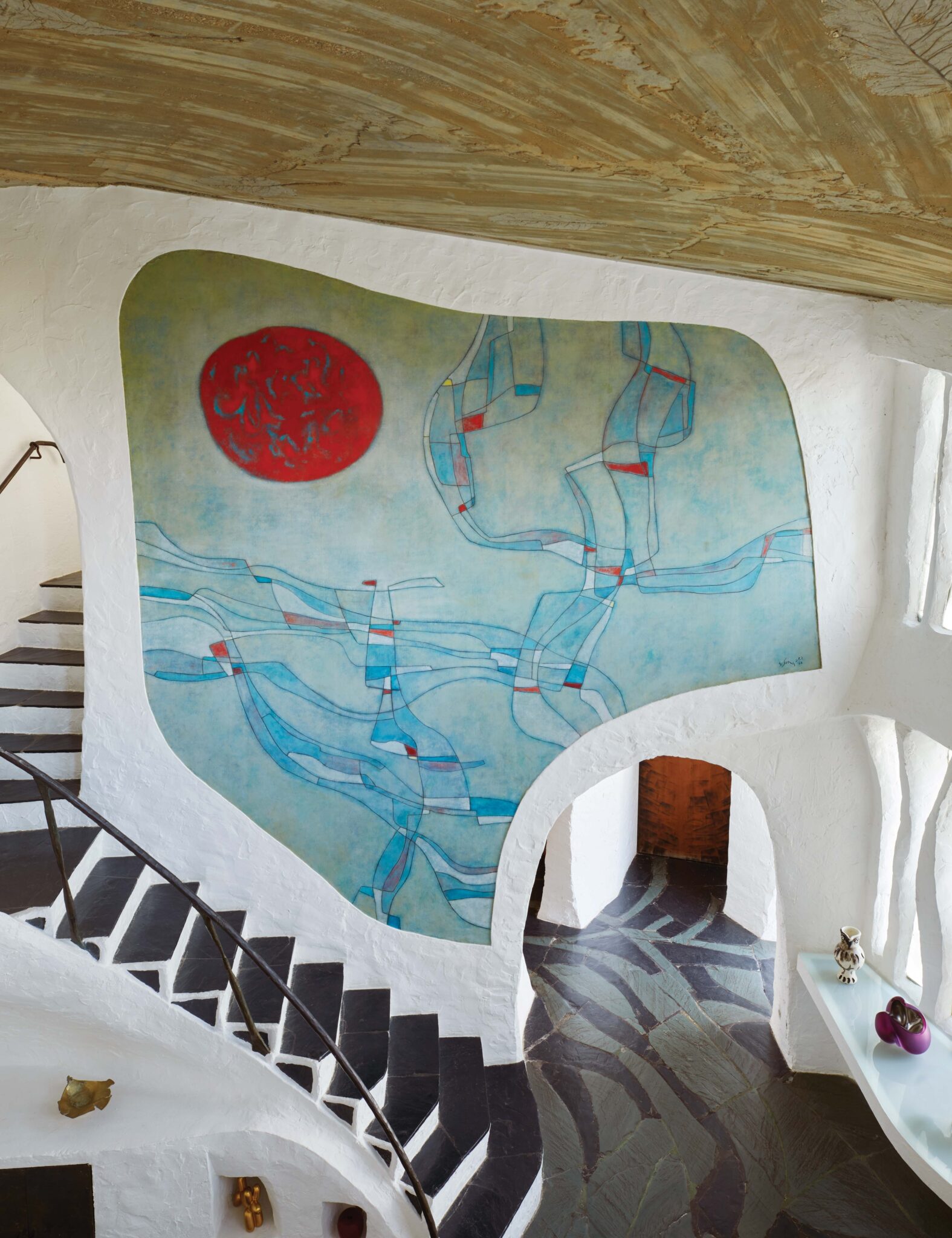In 1908, a devoted Hellenist erected the home of his dreams on the coast of the French Riviera. Now, more than a century later, Villa Kérylos is still transporting visitors back in time to ancient Greece.
Archaeologist and statesman Théodore Reinach resided in France in the late 19th and early 20th centuries, but his heart was in ancient Greece. While he couldn’t transport himself back to that time and place, of course, he did the next best thing: He conjured up a grand home for himself on the French Riviera that was as true to its Greek antecedents as he could possibly make it, completing the project in 1908. The Villa Kérylos, as he called his creation, has captivated design lovers ever since.
Reinach, who hailed from a wealthy German banking family, evoked his dream locale with his selection of the very site for his house: a promontory on a peninsula in Beaulieu-sur-Mer, near Nice, that called to mind Greece’s Mediterranean coast. The seaside location no doubt inspired the villa’s name—a kérylos is a sea swallow, a bird of good omen in Greek mythology.

The library is one of the largest rooms at the Grecian-style Villa Kérylos, built by French archaeologist and statesman Théodore Reinach in the early 20th century in Beaulieu-sur-Mer, France. The inscription reads: “It is here in the company of these Greek orators, wise men, and poets that I find a peaceful retreat in immortal beauty.”
Francois HalardIn architect Emmanuel Pontremoli, Reinach found an able partner. Their idea was not to slavishly copy one particular Greek abode but rather to internalize the thinking that went into noble houses on the Island of Delos in the 2nd century BCE and come up with the sort of structure those earlier builders might have erected (while also including modern plumbing and heating from their own era). The men began their project in 1902; soon, a white stucco edifice rose on the rocky shore.
Rooms were arrayed around a peristyle, an open-air courtyard that allowed light and air to circulate. State rooms occupied the ground level; bedrooms and bathrooms were upstairs. Marble, mosaics and frescoes were lavished throughout. Furnishings, on the other hand, were kept spare, in the neoclassical style. Much of it was made from fruitwood, including lemonwood.
Once the villa was completed, Reinach spent holidays there with his wife, Fanny, and their children, not far from the homes of other upper-crust families including the Ephrussis and the Rothschilds. When he died, in 1928, he bequeathed the house to the Institut de France, of which he had been a member, with the understanding that his heirs would be able to continue to live there.
Despite the good omen promised by Villa Kérylos’s name, all was not rosy for its occupants: Reinach, who was Jewish, had been a notable defender in the Dreyfus affair and a vocal opponent of rising anti-Semitism in France; after his death, during World War II, Nazi forces confiscated the house and destroyed Reinach’s vast archives. His son Julien, who was living at Villa Kérylos at the time, was arrested and imprisoned at Bergen-Belsen; Julien survived, but his younger brother Léon, sister-in-law Béatrice, and their two children—all of whom had been sent to Auschwitz—were killed.
After the war, the house and its furnishings—which, thanks to the gardener, had been moved to a museum for safekeeping—were returned to the surviving members of the Reinach family. They continued to use it until 1967, when the French government declared it a national historic monument.
In 2016, the Institut turned over the villa’s management to the Center des Monuments Nationaux, which means the house is now part of a network of nearly 100 historic sites including the Arc de Triomphe, the Cathedral of Notre Dame, and some of the country’s most celebrated châteaux. Now open to the public, the Villa Kérylos has been the setting for concerts, conferences, dances, art shows and readings.
-

Reinach designed nearly every piece of furniture himself, using historic artifacts as models, and had them produced by Parisian cabinetmaker Louis-François Bettenfeld.
Mary Gaudin -

In a balaneion, or bath, the shower is decorated with mosaics in ancient Hellenic style but incorporates modern amenities (at least as of 1908), like adjustable spray jets.
Mary Gaudin
But for the design-savvy, the house itself is the attraction. Interior decorator Stephen Sills has long been an admirer, and when he and James Huniford were decorating Tina Turner’s nearby home, they brought the singer there for inspiration. “She really adored it and it changed her perspective for her house,” recalls Sills who, with Huniford, adapted the villa’s chandeliers of bronze and alabaster for Turner.
The historian Adrien Goetz found the villa inspiring in a different way: He used it as the setting for his novel Villa of Delirium. Goetz was even able to spend a few nights there while researching his book. The rest of us must content ourselves with day trips—or simply lingering over the evocative images of the home that Reinach dreamed up over a century ago.
This Story originally appeared in Volume 9 of FREDERIC. Click here to subscribe!
























